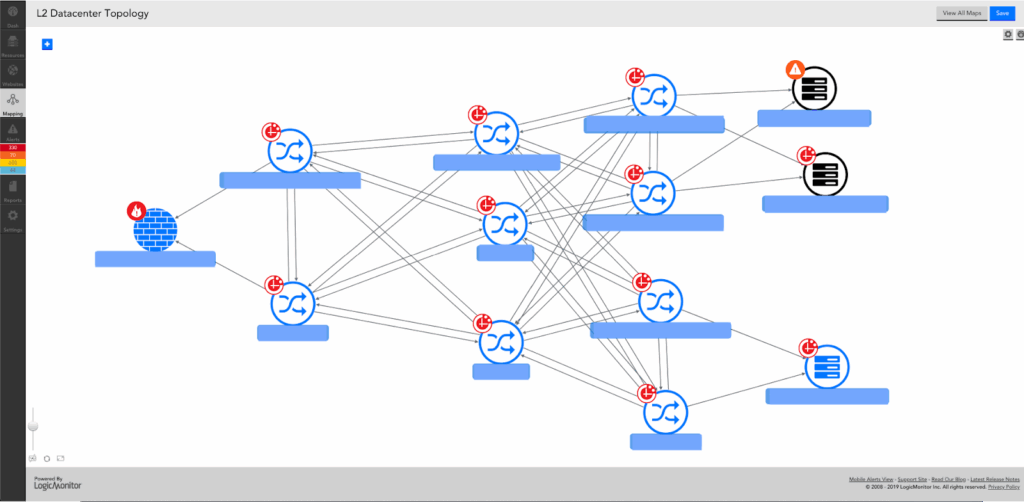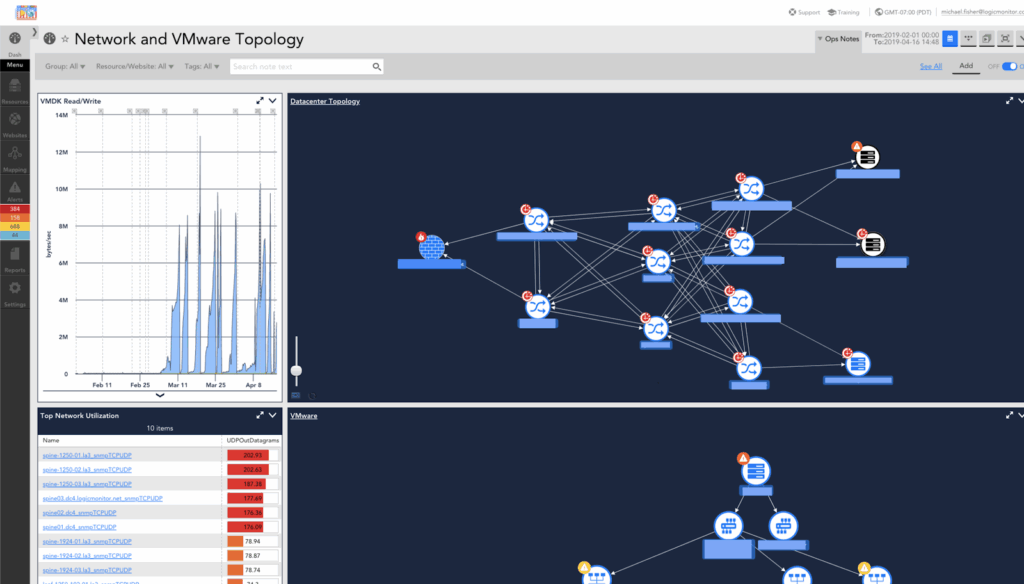An Introduction to Dynamic Topology with LogicMonitor


Proactively manage modern hybrid environments with predictive insights, intelligent automation, and full-stack observability.
Explore solutionsExplore our resource library for IT pros. Get expert guides, observability strategies, and real-world insights to power smarter, AI-driven operations.
Explore resourcesOur observability platform proactively delivers the insights and automation CIOs need to accelerate innovation.
About LogicMonitor
Get the latest blogs, whitepapers, eGuides, and more straight into your inbox.
Your video will begin shortly
Modern infrastructure is anything but static. Between hybrid clouds, containerized apps, and changing service layers, it’s hard to know what’s connected to what or what crashes when something goes down.
That’s where dynamic topology comes in. Instead of relying on static diagrams, it maps your infrastructure relationships in real time. This way, IT teams can visualize dependencies and maintain service continuity across complex, distributed environments.
In this guide, we’ll break down how dynamic topology works, what to look for in a solution, and where it delivers the most value in daily operations.
Dynamic topology automatically discovers devices, services, and their relationships across your infrastructure. As resources scale or spin up temporarily, the map updates in real time, giving you full visibility without manual effort.
Apart from showing what’s connected, dynamic topology helps understand how systems interact:
Dynamic network maps answer these questions instantly without you having to jump across dashboards. Compared to static mapping, this real-time infrastructure mapping reduces errors and gives clear insights into what’s really happening in your hybrid or distributed environments.
Static maps show you what your network looked like. Dynamic topology shows you what’s happening right now.
The idea of dynamic topology isn’t limited to one field. It’s a flexible concept that can be applied across multiple fields. So let’s see major areas where it really pays off:
In hybrid and distributed infrastructures, dynamic topology gives teams the visibility and confidence they need to reduce downtime and maintain control.
No two IT environments look alike so your topology tool needs to adapt. The best dynamic topology solutions give you control over what’s mapped, how it’s visualized, and how much context is layered onto each view.
So if you’re planning to invest in one, here are key capabilities to look for:
Dynamic topology delivers visibility, but like any real-time system, it needs thoughtful implementation to stay efficient in large, distributed environments. And here’s how you can achieve this:
Start with scope. The more resources you monitor, the more relationships the topology engine has to track. That doesn’t mean limiting visibility but it does mean focusing your views on what matters. Narrow the lens to a specific service, network segment, or region to avoid unnecessary load.
You may also see slight performance spikes during initial discovery or large-scale changes. That’s expected. LogicMonitor batches and optimizes these updates in the background, but it’s helpful to know when extra activity is normal.
For daily use, don’t rely on on-demand maps as your primary dashboard. They’re great for real-time troubleshooting, but saved maps or embedded views are more efficient for ongoing visibility.
LogicMonitor’s dynamic topology uses an additive approach. It surfaces only the relationships and context that matter for what you’re looking at. No clutter. No guesswork.

Layer 2 network topology map.
At the core of this is TopologySource, a LogicModule that automatically discovers and connects resources already under monitoring. For network infrastructure, that means built-in support for Cisco Discovery Protocol (CDP) and Link Layer Discovery Protocol (LLDP) enabled devices. Using device IDs reported through those protocols, LogicMonitor maps out switches, routers, firewalls, and hosts by matching them to their connected neighbors.
This coverage focuses on Layer 2 topology, using MAC addresses to trace relationships. But, we’re expanding to include Layer 3 paths and SAN infrastructure to offer even broader visibility.
For compute infrastructure, we offer TopologySource coverage for VMWare, Linux, and Windows hosts. Once deployed, you can trace the path from core switches through distribution and access switches, all the way down to the edge computer, or VM. Our TopologySources leverage the vCenter API to determine these relationships automatically.
But this isn’t just about drawing lines between boxes. It’s interactive and fully integrated into your IT monitoring workflow. This means, you can:
The payoff? You replace outdated, static diagrams with live maps that reflect your environment in real time. That means you can now troubleshoot issues faster and spend way less time to trace things manually.

Topology dashboard widget.
The topology data we’re capturing today will soon power additional AIOps features like alert suppression based on dependencies and smarter alert grouping. So your team can focus on what’s important without drowning in noise.
© LogicMonitor 2025 | All rights reserved. | All trademarks, trade names, service marks, and logos referenced herein belong to their respective companies.
Blogs
Explore guides, blogs, and best practices for maximizing performance, reducing downtime, and evolving your observability strategy.